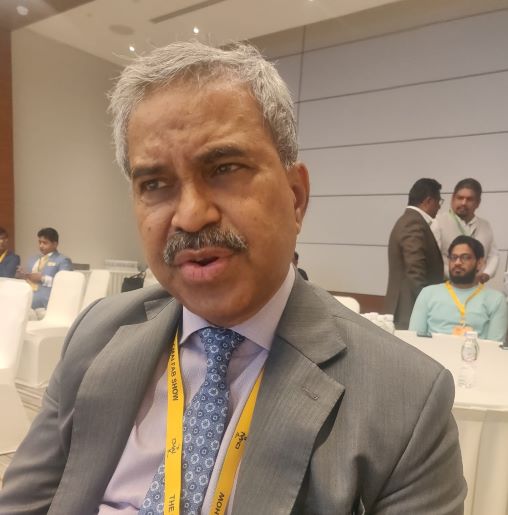Bangladesh apparel industry has bounced back from the pandemic with order books full and deliveries happening across the globe. Expecting to touch $41 billion in apparel exports in fiscal 2021-22, the country is looking to regaining its position as the No 2 apparel exporter in the world. Faruque Hassan, President, BGMEA, speaks to Sanjay Chawla, Global Convener, FashionatingWorld about how the industry coped with the pandemic and future challenges as it graduates to becoming a developing country.

Please throw some light on Bangladesh garment industry?
Bangladesh apparel sector faced many difficulties during the pandemic with massive supply chain disruptions, lockdown in various countries, order cancellations worth over $3.6 billion among others. However, we have bounced back and are working closely with all brands and developing partnerships with government.
Bangladesh financial year is from July to June. In fiscal year 2018-19 we exported apparel worth $34.13 billion which reduced below $28 billion in 2019-20, a fall of over $6 billion due to Covid. In fiscal 2020-21 our exports climbed up $3 billion and touched $31.43 billion. In fiscal 2021-22, we expect to exceed $41 billion. In fact, we have already crossed $33 billion in the past nine months and in the tenth month we are looking to reach $41 billion.
We have received good orders but the only challenge is high freight cost across the world. We are addressing issues at Chittagong other ports, talking to shipping companies and buyers.
Meanwhile, we are diversifying our products. As our garments are predominantly cotton-based, we looking to increase cotton export. With India, we can collaborate more as I strongly believe India has a strong position in yarns, fabrics, chemicals, dyes and machinery. Hence, Bangladesh wants to cooperate and collaborate instead of competing with India. The idea is to complement each other and grow together.
We expect investments to increase as Bangladesh is a good sourcing country and we have duty free access to Europe and other developed countries. India can take full advantage and export their goods through Bangladesh so that they can convert their fabrics and yarns into garments and add value. Indian fabric suppliers, yarn and fabric manufacturers should visit Bangladesh more frequently for marketing as there are no Covid related restrictions here. We would like to buy more yarn and fabric from India.
During Covid, when Bangladesh faced order cancellations and non payment of dues, what was BGMEA’s role in the industry?
We collected information on dues and contacted buyers through our government and embassies. We have recovered most payments and cancelled orders were placed once more, deliveries were made. Yet, some buyers went completely bankrupt and their issues have not yet been settled. We are helping factories recover their payment but one has to work as per bankruptcy laws. Some BGMEA members have lost a lot of money because of this. We are more careful now, most of these incidents happened during the first Covid wave. The second and third wave was managed better.
When these problems cropped up, there was talk of addressing these issues in future business contracts. Is there any progress on that front?
We have discussed the issue with WTO, European Union and met the President and senior members of American Apparel and Footwear Association. Things are changing and supply chain is improving. In Bangladesh, we are setting up backward linkages so that we do not suffer in future.
Recent UN and WTO reports say Vietnam is now the second largest apparel exporter, ahead of Bangladesh, your take?
From March 25 to May 15, 2020 almost for 45 to 60 days factories in Bangladesh were closed due to lockdown. Therefore, in 2020 Vietnam export figures were higher than Bangladesh. However, 2021 statistics are yet to be released by WTO, it comes out in July. We believe we are much ahead of Vietnam. In fact, only for three to four months our exports were lower than Vietnam but we bounced back.
What are the major challenges Bangladesh garment industry is facing today?
As we grow, we are building our infrastructure. Like every supply chain, we are working on our port facilities, container depots etc. The government has taken up many initiatives and the difference will be seen in 2022. Mega infrastructure projects like the Padma bridge, metro rail, Karnaphuli underground tunnel etc, will be operation in the next few years this will increase our competitiveness.
Numerous warehouses are coming up in collaboration with India in metro pole borders. We are also looking at three to four border points to boost trade with India, this will increase business for both countries. The other challenge is freight rates have increased abnormally. Also, cotton prices rise have impacted yarn and fabric costs.
India and China are Bangladesh garment industry’s biggest business partners. In future, will India gain more market share or will China grow bigger?
India is of our closest neighbours, so they can take advantage of their proximity. Bangladesh has a limitation as we don’t produce petrochemicals and India can take full advantage of that. Also, India has strong technical expertise in design development. Both countries can collaborate in yarn and fabrics by bringing it from India and converting it for export in Bangladesh thereby increasing export market share. Together, they can develop designs and make higher value products. Bangladesh is focusing on non cotton items. We had sent an 11 member delegation to Surat to procure man made non cotton fabrics. These companies can take full advantage and India will double market share.
Bangladesh raw material consumption from China has increased. Why has India not been able to increase its market share?
India has advantage but border trade needs to be more efficient. India has to be more price competitive. We want to give priority to India because they are our closest neighbour. Delivery from China is done either by ship or air but with India it can be done through all means of transport. So, we want to give priority to India. Year 2022 is important for us. We can increase our volume in 2023 and take it forward in 2024. We can increase our business with India and eventually India can cross China’s market share.
What impact will EU’s latest sustainability legislative have on Bangladesh exports to the EU?
We are taking it seriously because EU is our largest export destination. Export to the EU along with UK is 61 per cent, without UK it is 51 per cent. We hope to address this issue properly. Earlier too Bangladesh had handled it well. Hopefully, EU will give us enough time for transition
With cotton prices increasing in last few six months, how has exports been affected? Are manufacturers/buyers willing to pay higher prices to absorb escalating raw material costs?
Generally buyers are not ready to pay higher prices but this time they are paying for the increase in cotton price. But this is not sustainable. The abnormal high price of cotton is not good for the long term. Some price increase is good for the labour on the field; farmers too need better prices so that they are motivated to cultivate and harvest more cotton. But that doesn’t mean price rise should continue, otherwise demand and consumption will both fall. At the end, price rise will affect both farmers and manufacturers. At the same time, I am not for prices reverting back to original but there should be optimization. Then in the long term the business will be good for everybody.
How has Bangladesh industry adopted digitalizing in garment industry?
We are working on this aspect with automation and machinery upgradation. We have invested a lot of money on new technologies. This will help us reduce manpower as wages are increasing. We will be more competitive and efficient. We have developed many training processes for human resources which will help us in the long run.
What are BGMEA’s new initiatives?
BGMEA has started its apparel diplomacy. Two years ago, when I took over the as the President, the main focus was to run the industry and business smoothly with pandemic spread. We have overcome that and bounced back. Since last September, we have started overseas travel as a part of apparel diplomacy. I went to America and Canada and met brand partners and diplomats. I also went to Europe and UK because Bangladesh will graduate from least developed country to a developing country, so there are a lot of challenges and opportunities that we need to tap.
A mega event ‘Made in Bangladesh Week’ will be held from November 13 to 18, 2022. For this, we are visiting top customers. This event will coincide with IAF’s 37th Annual Fashion Convention in Dhaka. This year, IAF commemorates 50 years and the celebrity summit is being held in Dhaka. An Apparel Expo is also on the cards during the same time integrated with awards ceremonies.
An interesting feature we noticed during the pandemic is we were unable to do online sales from Bangladesh. We are looking at how to take this forward. This needs amendment in our customs and the financial regulations. We are working on it so that in future we can sell online and deliver goods across the globe.












